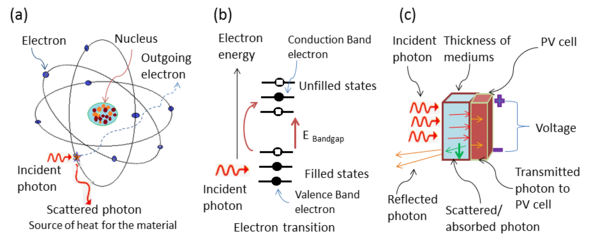The Effect of Various Liquid Mediums on the Transport of Photonic Energy and its Impact on the Quantum Efficiency of Photovoltaic Cells
(1) Westbrook Intermediate School, Friendswood, Texas
https://doi.org/10.59720/14-057
Photons from sunlight with energy slightly higher than that of the band gap of silicon create electric current within a photovoltaic (PV) cell. However, many photons from sunlight have either insufficient or excess energy. This study was conducted to find the effect of different photon transmission mediums on the temperature and voltage output of photovoltaic cells. Two different photovoltaic cells were tested under a 20-watt halogen lamp with 6 transmission mediums: 5% NaCl solution, 5% sugar solution, deionized (DI) water, canola oil, extra virgin olive oil (EVOO), and the control (air). It was hypothesized that the mediums with higher specific heats would result in relatively lower temperature increases, maintain higher voltages and have increased efficiencies compared to the mediums with lower specific heats. The voltage drop for EVOO, canola oil and air were higher than that of the aqueous solutions such as 5% sugar solution, 5% NaCl, or DI water. The results show an estimated increase of 5-6% in the performance of conventional photovoltaic cells by simply placing a layer of aqueous solution above the PV cell.
This article has been tagged with: